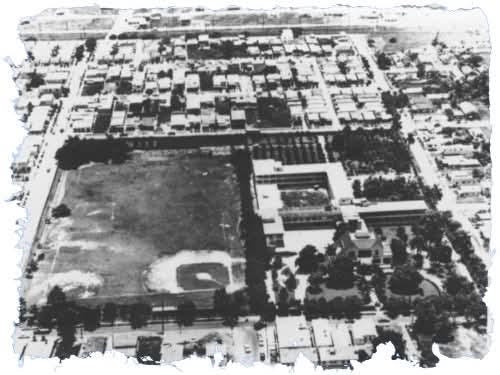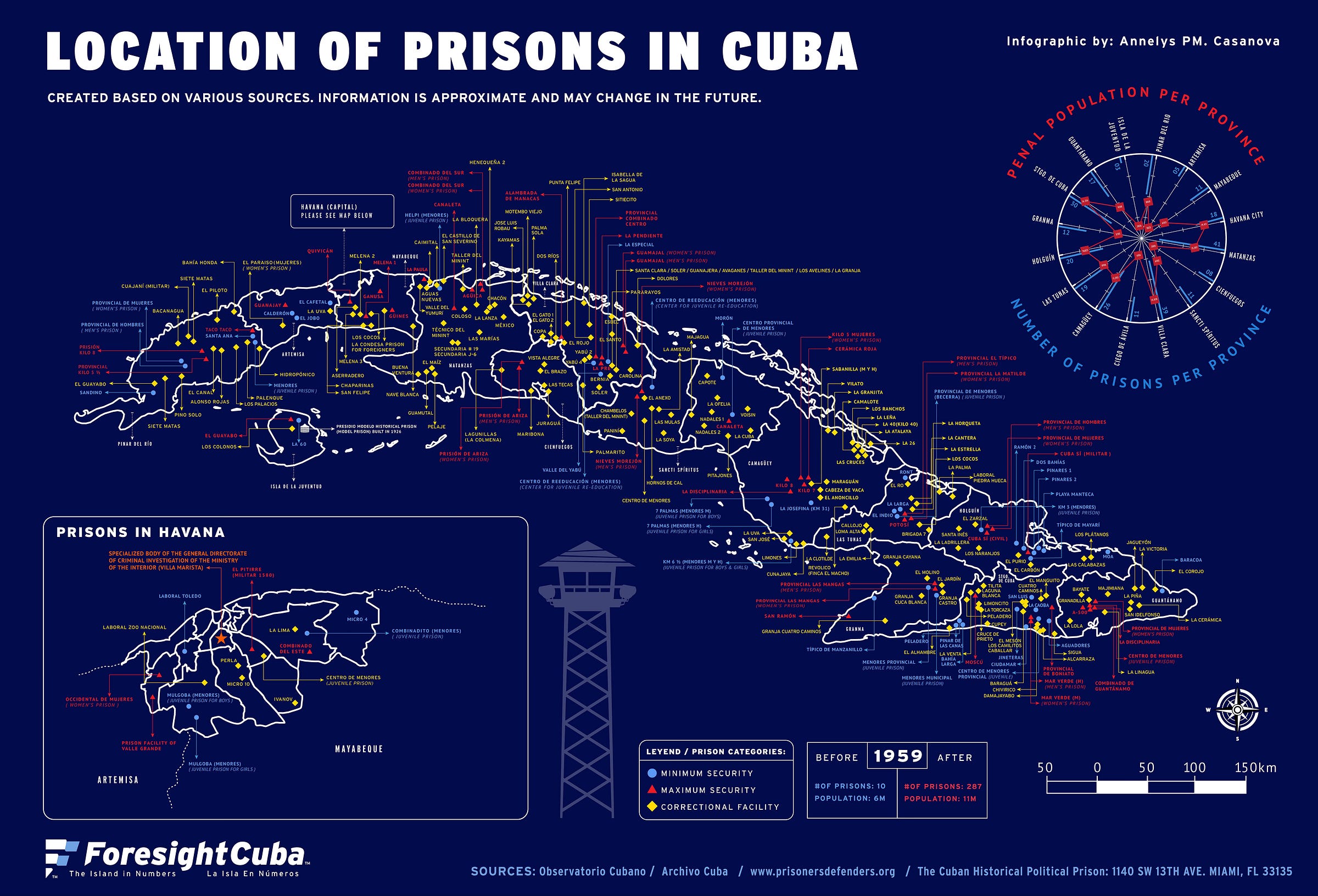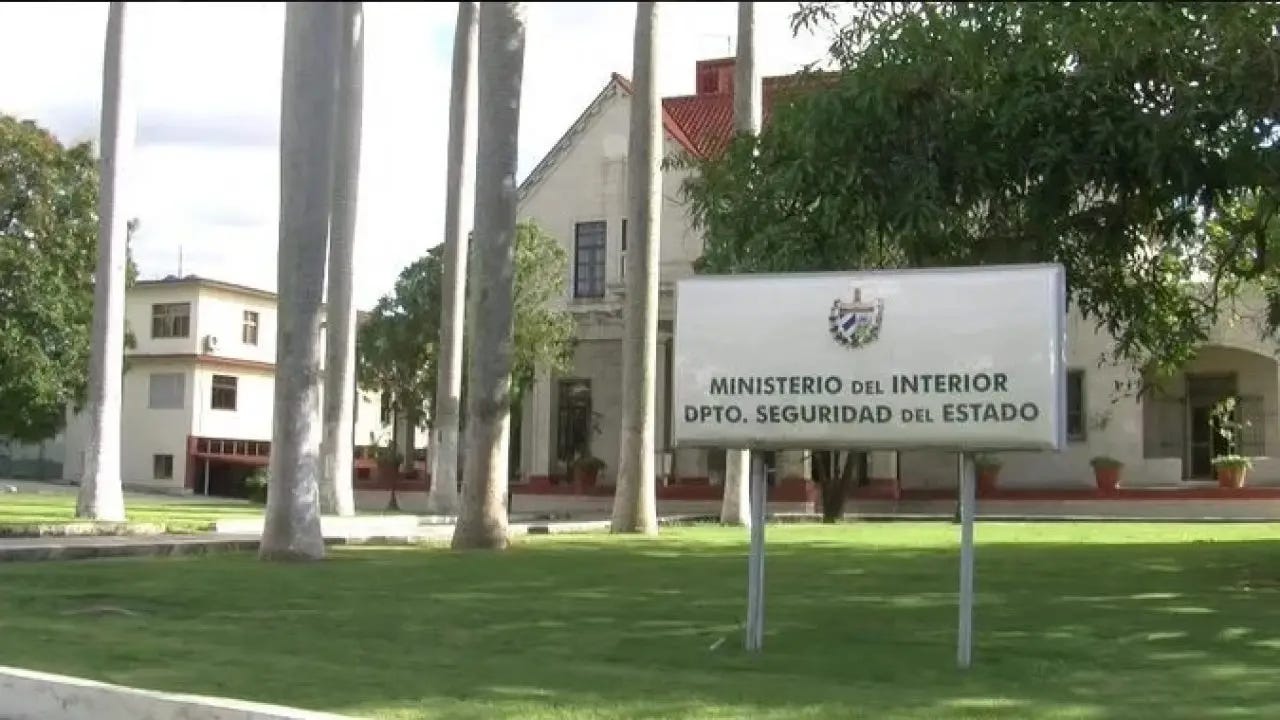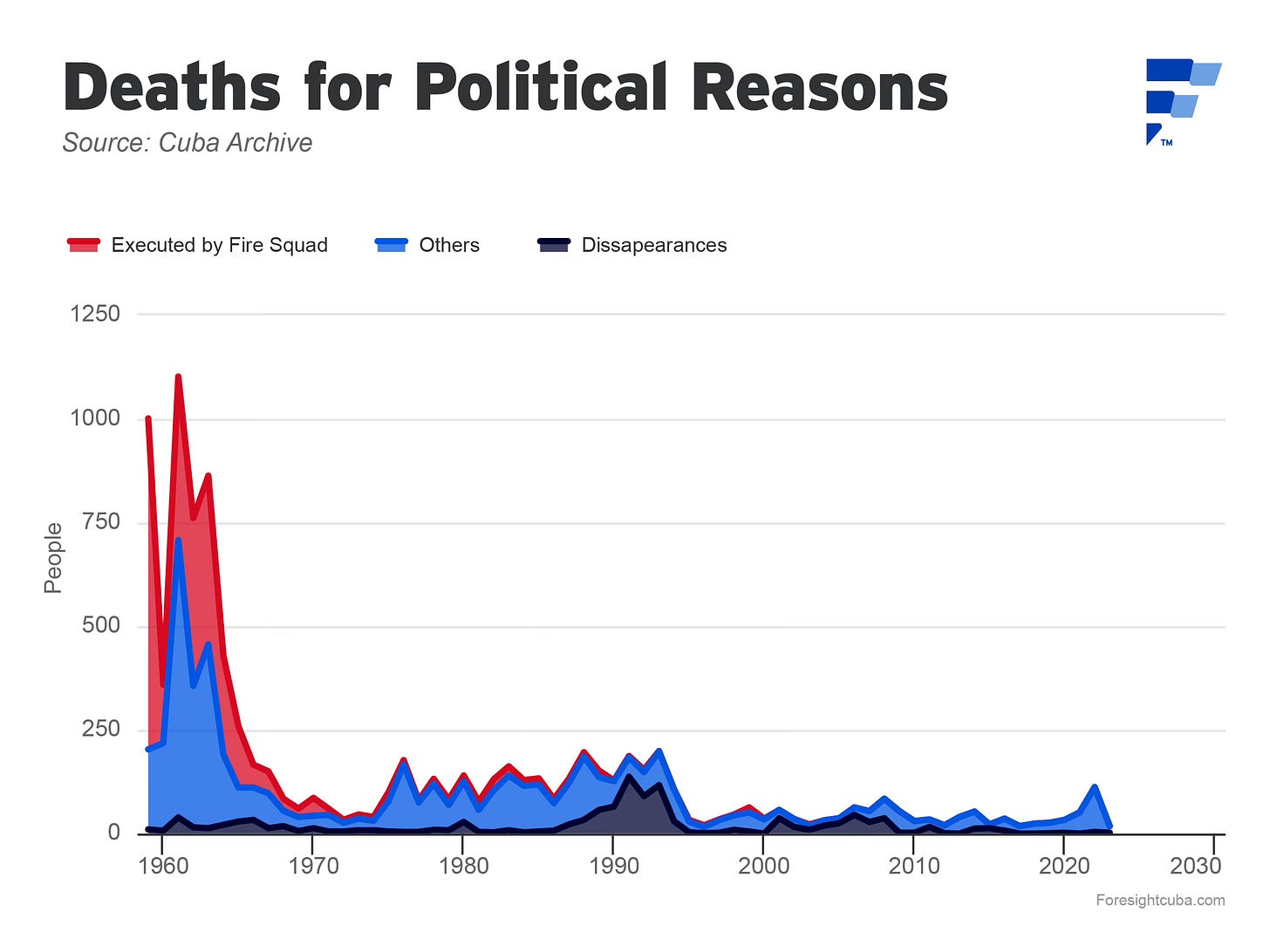Department of Penitentiary Establishments of the Ministry of the Interior (DEP MININT)
The Evolution of Cuba's Penitentiary System and State Control Over Detainees
The Department of Penitentiary Establishments of the Ministry of the Interior (DEP MININT) is responsible for organizing and maintaining the necessary structure to guard individuals who have been deprived of their liberty. In theory, the Directorate of Control of Legality in Penitentiary Establishments, which belongs to the Attorney General’s Office, ensures the respect for human rights and the fundamental guarantees of citizens serving criminal sanctions.
Penitentiary Infrastructure in 1958
The penitentiary infrastructure and the number of prisoners have increased exponentially since 1958. In that year, there were only 14 prisons and jails. The warden of a Cuban prison was a civilian appointed by the Minister of Governance, and the custody of the prison was under the control of a police force subordinated to the municipal civil authority. No other armed bodies were allowed inside the prison. The investigating judge or court, who would make surprise visits to the local prisons on a weekly basis, would inquire about the situation of the prisoners and could take measures to eliminate what they deemed abusive or degrading.
List of prisons in 1958:
Pinar del Río Prison
El Príncipe Prison (Havana)
Guanajay Women's Prison (Havana)
Juvenile Reformatory (Torrens, Havana)
Modelo Prison (Isla de Pinos) (the only high-security prison)
Matanzas Prison
Santa Clara Prison
Remedios Prison
Cienfuegos Prison
Camagüey Prison
Morón Prison
Boniato Prison
Manzanillo Prison
Holguín Prison
Starting in 1959, 3,033 people were executed by firing squads, most of them at the La Cabaña Fortress. Thousands more were sentenced to long prison terms. The Castillo del Morro and the Castillo del Príncipe were also used as main detention centers.
In 1963, the school of the Marista Brothers was transformed into the headquarters of State Security. These buildings, constructed in 1946, still serve as the main interrogation center for crimes against state security. It is a tropical replica of the Cheka, the KGB, and currently, the FSB headquarters in Moscow. It is officially called the Specialized Body of the General Directorate of Criminal Investigation of the Ministry of the Interior (MININT).


Between 1960 and 1965, concentration camps known as Military Units for Production Support (UMAP) operated and were shut down due to international pressure. There are other detention centers, belonging to the Technical Department of Investigations of the National Revolutionary Police, where detainees are interrogated before being sent to prison.
This center is where political detainees, as well as artists and writers critical of the government, are sent. Three of Cuba's best poets, Reinaldo Arenas, Eliseo Alberto, and Heberto Padilla, were detained for writing poems. Foreigners suspected of espionage or drug trafficking crimes, as well as businessmen whose presence in Cuba the government deems unnecessary, are also detained here. This was the case of British businessman Stephen Purvis, who was imprisoned for 16 months. He was only allowed to leave after signing over his share of a $400 million golf project, which was later resold to a Chinese company.
Canadian businessman Cy Tokmakjan was sentenced to 15 years in prison and had $100 million confiscated. In "La Villa," those suspected of economic crimes or party members accused of corruption or treason are also interrogated. General Rogelio Acevedo was detained for years without any charges being proven.
In reality, any pretext seems valid. For instance, Canadian tourist Chris Hudges was interrogated for thirteen days for flying a drone in Havana. VIP prisoners are kept in safe houses before being sent to jail. Once there, everything depends on a political decision. Former Interior Minister José Abrantes Fernández was denied medical assistance and left to die.
There is no doubt that any process of prosperity for the Cuban nation must begin with the dissolution of the State Security Department and the closure of the facilities at Villa Marista. It should be remembered that these buildings are nearing 80 years old.
No institution, national or foreign, controls what happens within these walls, and the fate of detainees depends solely on the desires of the investigator or a political decision. Detainees remain incarcerated for as long as State Security deems necessary. From there, they are either released under the supervision of the Counterintelligence Department of the Ministry of the Interior or sent to prison. Foreign detainees are usually transferred to La Condesa prison.
According to the regulations of the Penitentiary System, detention facilities are defined as: a) Penitentiary establishments for the execution of prison sentences and the precautionary measure of pretrial detention.
b) Specialized penitentiary establishments and centers for the detention of individuals with HIV/AIDS, women, youth, and foreigners, in any of the existing regimes.
c) Penitentiary centers with minimal security conditions for the execution of custodial sentences, correctional work with internment, and re-education measures with internment.
d) Hospitals and polyclinics for the care of detainees, sentenced wards in hospitals of the national public health network, and assistance centers for detoxification and rehabilitation for addiction to alcohol or other drugs.
We have identified approximately 290 detention sites in Cuba based on data from various sources. The Cuban state allows international human rights organizations to inspect these centers only on exceptional occasions. It also offers amnesty to prisoners exceptionally. Around 3,600 prisoners were released and expelled from the country in 1978. In 1980, the government emptied the prisons, offering prisoners the option of staying in prison or leaving for the United States.
Around 3,500 prisoners were released during the Pope’s visit to Cuba in 2015. The combat order issued on July 11, 2011, to imprison over a thousand people who protested against the inhumane conditions they were living in, has not been revoked.

Sources: Archivo Cuba. / Autentico.org. / Observatorio Cubano. / Prisoner Defenders
Original article in Spanish: ForesightCuba






